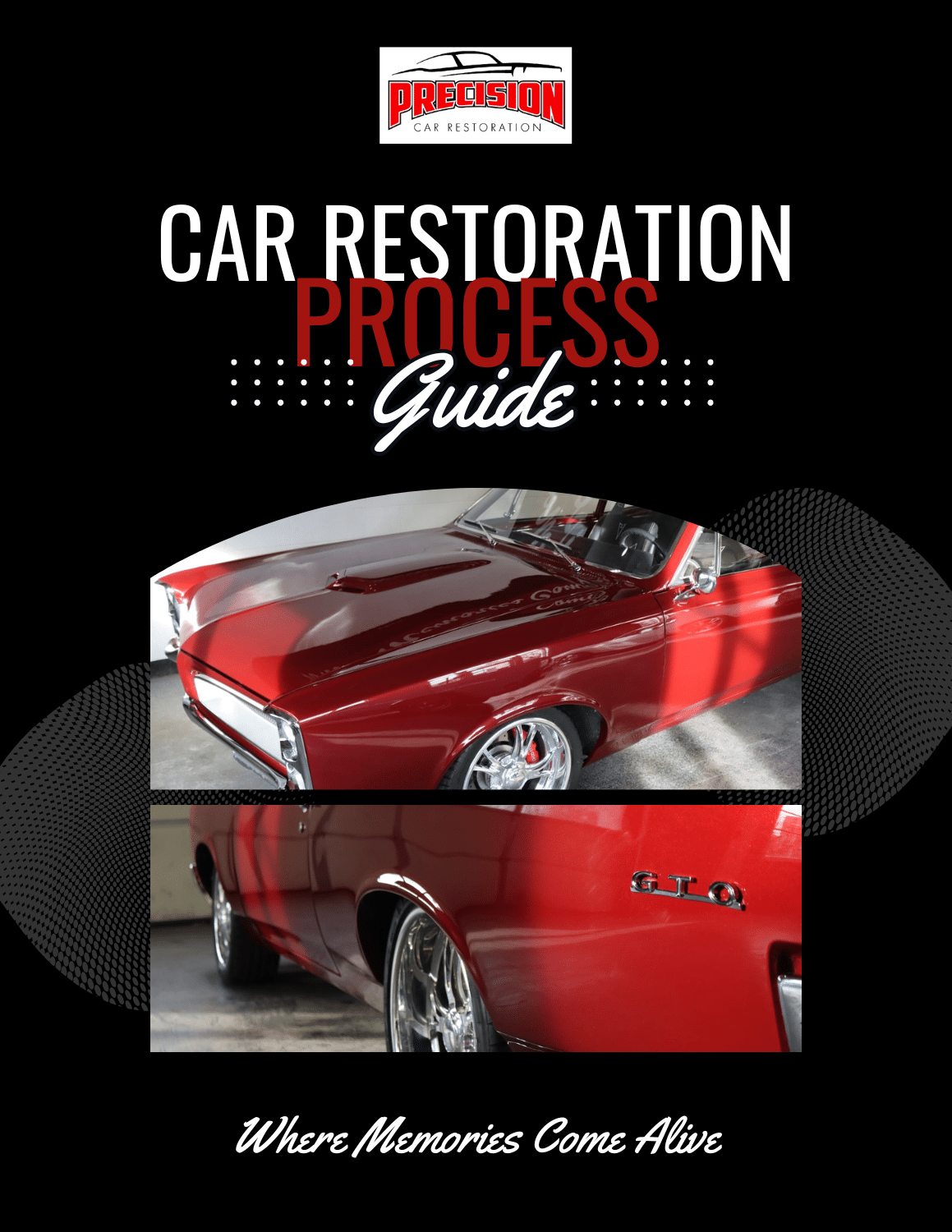
A chrome widget is a chrome widget, right? Wrong! Many of our customers refer to all of the shiny parts on their vehicle as chrome. In truth, real chrome represents only a fraction of the shiny parts. Knowing what parts are actually chrome, and what parts are shiny widgets that just look like chrome, will help you get a better handle on the true costs of chrome restoration.
Although chrome is a term that’s thrown around a lot when referring to trim and bumpers, on most vehicles the trim is usually made from stainless steel or anodized aluminum. Items that are usually chrome include the bumpers, door handles, emblems, taillight and head light bezels, and mirrors. Chrome can add an enormous amount to your final costs, so be prepared. Door handles can cost $85-$125 to re-chrome, and bumpers run anywhere from $300 – $1,000. Pricing always depends on prior condition before re-chroming work can begin. Pot metal or rusted pieces can take many hours of labor to make into chrome-worthy piece, and afterwards, they still might not be 100-percent flawless. Plastic can also be chromed by specialized shops, and pricing is about the same as chroming metal.

Stainless Steel
Stainless steel can be one of the biggest difference makers in cost during a classic car restoration project. Most of the window trim, wheel opening moldings, belt line moldings, and drip rail moldings are usually stainless. Stainless is very forgiving when it comes to polishing and straightening. A skilled polisher can save just about anything as long as it’s not ripped or punctured. Many polishers charge by the foot and the price goes up according to width.
Anodized Aluminum
Anodized aluminum is simply polished aluminum with an anodized coating. It’s luster means that it’s yet another material that’s commonly mistaken for stainless steel. Old anodized aluminum can usually be identified by chalkiness or by whitish-colored scratches. Anodized aluminum is commonly used in grilles, headlight surrounds, body side moldings, aftermarket wheel openings, aftermarket rocker moldings, and in some dash trim. Anodized aluminum can be straightened and polished, but comes at a cost. In order to polish anodized aluminum, the anodized coating needs to be stripped off. Not all polishers will strip the coating properly. The removal of the anodized coating makes the aluminum more susceptible to tarnishing a fading. Stripped anodized aluminum needs constant waxing to keep its show quality shine, and will eventually need to be re-polished. The re-anodizing of the stripped moldings can be accomplished, but will come at a high cost and it can be hard to find a qualified person to do the work.
Other types of material that can be chromed are brass and copper. These materials are more common on vehicles built before 1960. Black chrome is another option that is available for custom options. Many other types of material can be polished or chromed and a quality chrome shop will recommend the best options for your parts.


